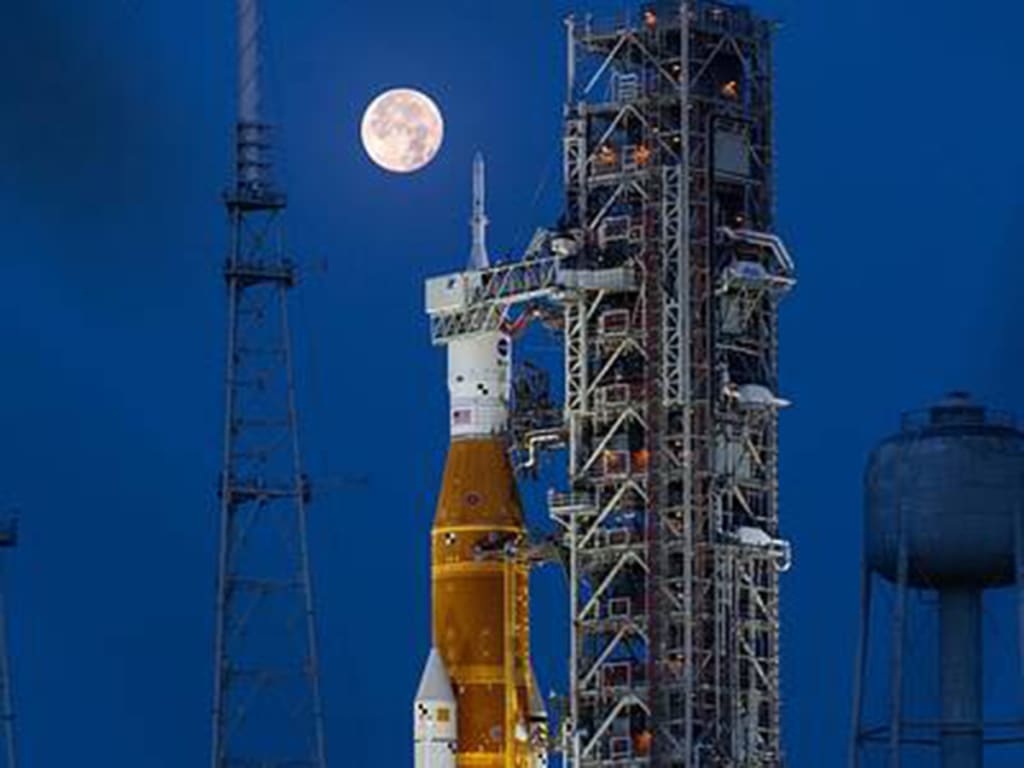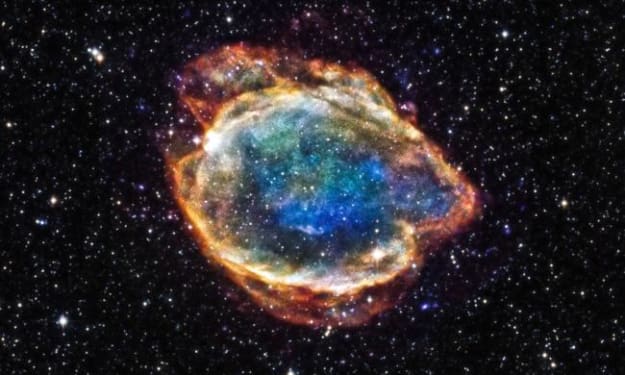ARTEMIS I ON ITS WAY TO THE MOON
Artemis I is a 26-day, uncrewed mission to travel around the moon and return to Earth. Find out how the powerful SLS rocket finally got off the ground and what the mission hopes to accomplish.

Like every kid my age, I built a scale model of the Saturn V rocket back in the early 70s. We were all glued to our television sets as NASA sent nine crewed missions to the moon in those years.
That’s when we all learned to do the countdown, “five, four, three, two, one, liftoff!” Rocket launches were always impressive, and the Saturn V was the most spectacular rocket of them all.
Saturn V rockets were massive, standing 111 metres in height, and weighing almost 3,000 tonnes. Announcers broadcasting their launches always mentioned the fun fact that the command module, or space capsule, in which the astronauts sat was smaller than the cone-shaped nozzles at the rocket’s base.
SATURN V ONLY VEHICLE TO LAUNCH CREWS BEYOND EARTH ORBIT
The Saturn V rocket is the only space vehicle that has ever launched crews beyond Earth orbit. We haven’t needed to do that in recent years, because crewed space exploration has focused on the International Space Station.
That all changed at 1:47 EST on Wednesday November 16, 2022, when NASA launched its Space Launch System (SLS) for the first time. The launch went off without a hitch from Florida’s Kennedy Space Center.
The SLS is the most powerful rocket ever built. Although this test flight is uncrewed, NASA says it’s the first step toward bringing back crewed missions to the moon and beyond.
ARTEMIS IS THE GODDESS OF NATURE AND APOLLO’S TWIN SISTER
The launch is part of the Artemis program. In Greek mythology, Artemis is the goddess of nature and Apollo’s twin sister.
NASA explains the purpose of Artemis this way. “Artemis is the first step in the next era of human exploration. Together with commercial and international partners, NASA will establish a sustainable presence on the Moon to prepare for missions to Mars.”
This name of this mission is Artemis I. Its goal is to propel an uncrewed Orion space capsule around the moon and back over the next 26 days.
“HUMAN EXPLORATION ON THE MOON AND, ULTIMATELY, MARS”
NASA Administrator Bill Nelson explained Artemis I’s purpose this way. “This uncrewed flight test will push Orion to the limits in the rigors of deep space, helping us prepare for human exploration on the Moon and, ultimately, Mars.”
There have been a lot of fits and starts on the way to this week’s successful launch. In fact, people were beginning to express some doubts about the feasibility of the SLS rocket system, which is about five years behind its original schedule.
Originally, NASA planned to launch Artemis I on August 29, but they had to cancel due to a faulty thermometer. Then, on September 4, the connection between the rocket and the mobile launcher had a fuel leak.
AWE-INSPIRING LAUNCH SEEMS TO HAVE SILENCED NAYSAYERS
Hurricanes Ian and Nicole caused additional delays. However, Wednesday’s awe-inspiring launch seems to have silenced the naysayers, at least for the moment.
Once it reached orbit, Orion spread out its solar arrays, while NASA’s engineers checked out its on-board systems. Then, its upper-stage rocket fired an 18-minute burn to leave orbit and head for the Moon.
Orion has now separated from its upper stage rocket, and conducted another series of burns to adjust its course. Now, because of Newton’s law of inertia, it will remain in motion, coasting its way to the moon, unless the team needs to make any course corrections.
CUBESATS CONTAINING EXPERIMENTS AND DEMONSTRATIONS
The spacecraft includes a ring of 10 CubeSats. These are small, standardized satellites that now play a major role in space exploration.
Each of the CubeSats contains a tiny experiment or technology demonstration. They all have a specific mission, either to fill knowledge gaps or to test new technical solutions for future missions.
Engineers expect the Orion spacecraft to fly past the moon on November 21. That will include a close approach of the lunar surface.
WILL TRAVEL ABOUT 65,000 KILOMETRES PAST THE MOON
Then, the space capsule will travel about 65,000 kilometres past the moon. From there, it will orbit the Moon to use the slingshot effect, taking advantage of lunar gravity to propel Orion back to Earth.
We all love a hero’s journey, even when the hero is a machine. The question many are asking about the Artemis program, though, is whether crewed space exploration is necessary or even desirable.
For example, Adam Minter of Bloomberg, has written that the SLS rocket on which Artemis is based, was “conceived as a means to maintain US aerospace employment, and based in part on older rocket designs and parts.:” According to Minter, “the project has siphoned funds and energy.”
CRITICS SAY ARTEMIS IS ABOUT PROTECTING JOBS
Critics like Minter argue that the Artemis program has more to do with protecting jobs in key congressional districts than exploration or science. NASA does make a point of telling the public that, “Every state in America has contributed to building Artemis, with companies hard at work to build the systems that will help establish a long-term human presence on the moon.”
Opponents of Artemis contend that uncrewed missions can do the job better. They also believe that the private sector delivers the real innovation in space technology these days.
The International Space Exploration Coordination Group (ISECG) is a consortium of fourteen national space agencies. They’ve argued that crewed space exploration has three fundamental benefits – innovation, addressing global challenges, and culture and inspiration.
“SPACE EXPLORATION MISSIONS FULFILL PEOPLE’S CURIOSITY”
I think if we’re honest with ourselves, the reason we’re fascinated by space exploration falls into that last category. As the ISECG wrote, “Every day, space exploration missions fulfill people’s curiosity, producing fresh data about the solar system that brings us closer to answering profound questions that have been asked for millennia.”
Humanity’s thirst for meaning drives us to explore for answers about the universe and our place within it. We’ll always continue that exploration, and humans will always want to be the explorers, whether there’s a business case for it or not.
As Jim Free, who’s in charge of Exploration Systems Development at NASA, said, “This successful launch means NASA and our partners are on a path to explore farther in space than ever before for the benefit of humanity.”
We always have more to learn if we dare to know.
Learn more:
Liftoff! NASA’s Artemis I Mega Rocket Launches Orion to Moon
Around the Moon with NASA’s First Launch of SLS with Orion
DART Mission Demonstrates NASA’s Planetary Defense Strategy
About the Creator
David Morton Rintoul
I'm a freelance writer and commercial blogger, offering stories for those who find meaning in stories about our Universe, Nature and Humanity. We always have more to learn if we Dare to Know.
Enjoyed the story? Support the Creator.
Subscribe for free to receive all their stories in your feed. You could also pledge your support or give them a one-off tip, letting them know you appreciate their work.






Comments
There are no comments for this story
Be the first to respond and start the conversation.